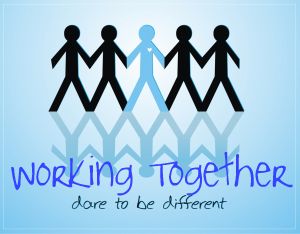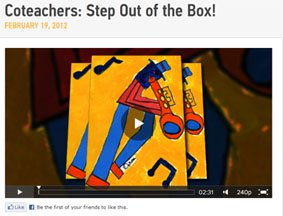Are there hard and fast rules for establishing a culture of collaboration? Well, not really. Collaboration occurs on many levels, depending on circumstances and goals, but embedded librarianship takes collaboration in new and innovative directions. Embedded librarians, like embedded journalists are on the front lines. While embedded journalists report from first-hand experience, embedded librarians are directly involved in planning, supporting, and co-teaching within a variety of learning communities, not just the library. Physical classrooms or other learning spaces, virtual classrooms or spaces, social media platforms, cloud computing, you name it, the creative embedded librarian knows no bounds! Customization is the norm and relationships with co-teachers, other learning community members, and participants are prized. Embedded librarians seek out opportunities to expand their services and expertise. They don’t wait to be asked!
Tips for getting started as an embedded librarian:
Sara Kelley-Mudie, Librarian/ Ed Tech Facilitator at the Forman School in Litchfield, CT presented at the Nebraska Educational Media Association Conference on October 17, 2012. Take a look at her slideshare titled: Like a splinter or a journalist? Embedded School Librarianship. She shares experiences about her path to active learning and teaching, and relates how an effective embedded librarian is both a thorn and a journalist, certainly an interesting metaphor. Be sure to read the notes for each slide to catch the humor and the insights.
Looking for more models of embedded librarianship in schools and higher education? I highly recommend, “Embedded Librarianship: Tools and Practices,” in Library Technology Reports (February/March 2012) edited by Buffy Hamilton. There are several case profiles that feature “boots on the ground” examples of librarians who have used Skype, Twitter, blogs, and Google applications to enhance learning through partnerships with teachers and community members. In each case, the librarian demonstrates how technology tools enable integration of the content and process of learning for both educators and learners. There are great ideas that serve as inspiration for all of us who desire to be “deep in the weeds.”
As we continue to think of our roles as information specialists, and how we can better serve the populations in our schools, think about how you might embed your special talents and knowledge in your own situation. Are you embedded already, or how would you get started? Share your ideas here!
References:
Hamilton, B. ed. (2012). Embedded Librarianship: Tools and Practices. Library Technology Reports. 48: (2). http://www.alatechsource.org/taxonomy/term/106/embedded-librarianship-tools-and-practices (Accessed Jan. 28, 2013) (Also available through academic databases such as Academic Search Premier.)
Kelley-Mudie, S. October 17, 2012. Like a splinter or a journalist? Embedded School Librarianship. [Slideshare] http://www.slideshare.net/formanlibrary/embedded-school-librarianship-nema (Accessed Jan. 28, 2013)


